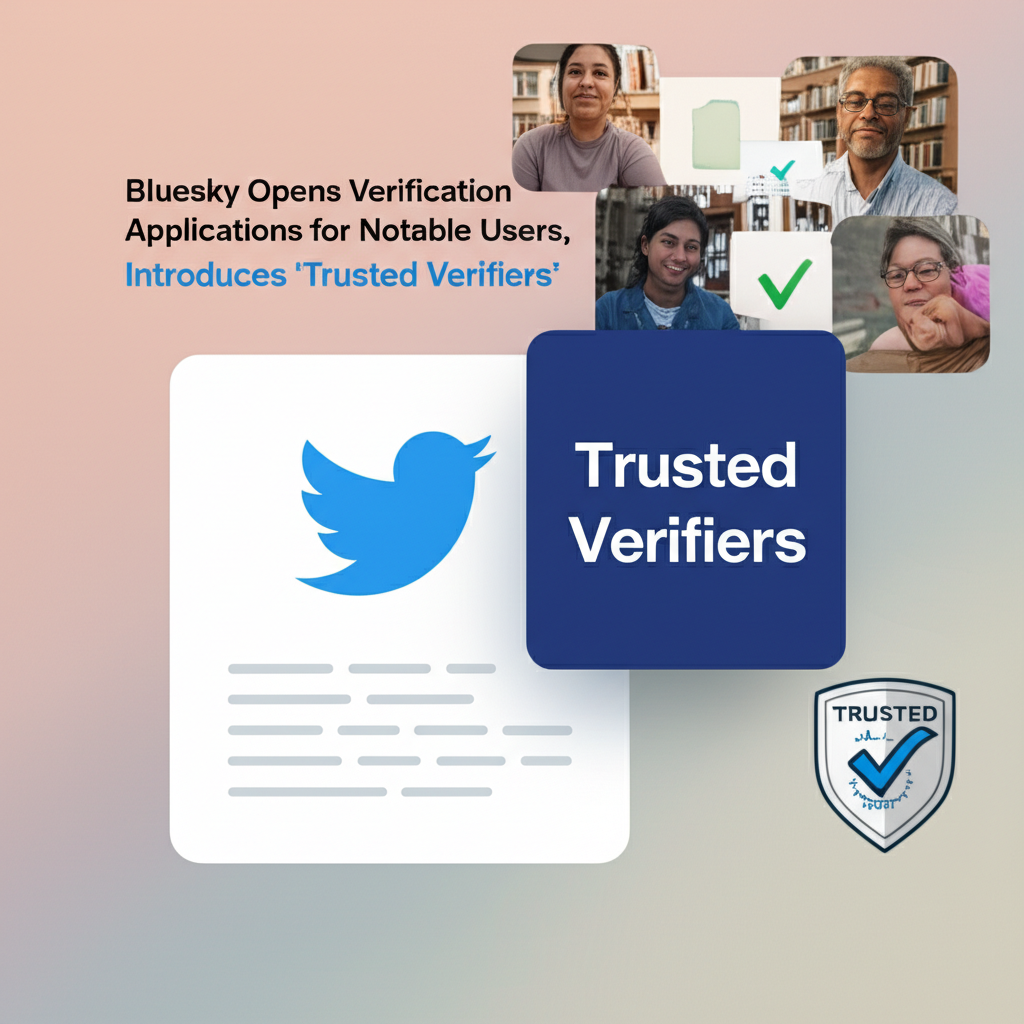OpenAI's Next Frontier: A Screenless AI Companion Designed with Jony Ive
OpenAI, the company that catapulted generative artificial intelligence into mainstream consciousness with products like ChatGPT, is reportedly setting its sights on a new horizon: consumer hardware. But according to recent reports, their ambitious foray into physical devices won't follow the path trod by many recent tech hopefuls aiming for the wrist or the face. Instead, the AI giant, now bolstered by the design prowess of former Apple chief design officer Jony Ive, is said to be developing a compact, screenless device intended to serve as a ubiquitous AI companion.
The news, initially reported by the Wall Street Journal based on leaked remarks from OpenAI CEO Sam Altman to employees, paints a picture of a strategic pivot. Altman reportedly told staff that the company's next significant product would not be a wearable device, a category that has seen mixed success and significant challenges for recent AI-focused entrants. Instead, the focus is on a small, screenless gadget designed to be highly aware of its user's environment. This device is envisioned not as a replacement for existing technology, but as a fundamental addition – a 'third core device' alongside staples like a MacBook Pro or an iPhone.

The Jony Ive Connection: A Strategic Acquisition
This hardware initiative is intrinsically linked to a major recent development for OpenAI: the acquisition of io, a startup founded just last year by Jony Ive. The deal, reportedly valued at a staggering $6.5 billion in equity, brings one of the most influential figures in modern product design into the OpenAI fold. Ive is set to take on a crucial creative and design leadership role, suggesting that the aesthetic and user experience of this new device will be paramount.
Jony Ive's legacy at Apple is defined by iconic products that seamlessly blended form and function, making complex technology intuitive and desirable for mass consumers. His involvement signals OpenAI's seriousness about creating a consumer product that is not just technologically advanced but also beautifully designed and deeply integrated into daily life. The acquisition of his nascent firm, io, for such a substantial sum underscores the strategic importance OpenAI places on this hardware venture and the unique value they believe Ive brings to the table.
Altman reportedly expressed immense confidence in the potential of this collaboration and the resulting product. He told employees that the acquisition and the subsequent device development could eventually add a remarkable $1 trillion in market value to OpenAI. This ambitious target highlights the company's belief that this device has the potential to define a completely new category of consumer electronics, much like the iPhone did for smartphones or the MacBook did for portable computing.
Beyond Wearables: Defining a New Device Category
The reported emphasis on the device *not* being a wearable is particularly telling in the current tech landscape. The past couple of years have seen a surge of interest in AI-focused hardware, often taking the form of wearables or handheld companions. Devices like the Rabbit R1 and the Humane AI Pin have attempted to carve out a niche by offering screenless or minimalist interfaces powered by AI, aiming to reduce reliance on smartphones.
However, these early attempts have faced significant challenges. The Humane AI Pin, for instance, struggled with performance issues, battery life, and a lack of compelling use cases that justified its price and form factor, ultimately leading to the sale of its assets. While smart glasses, like those developed by Meta in partnership with Ray-Ban, offer some AI capabilities and hands-free interaction, they often remain tethered to a smartphone ecosystem and are primarily focused on specific tasks like photography, communication, or basic information retrieval, rather than acting as a pervasive, context-aware AI companion.
OpenAI's reported vision seems to be for something different. A compact, screenless device that is 'fully aware of its user's surroundings' suggests a focus on ambient intelligence and proactive assistance. Instead of requiring explicit commands or interactions via a screen, this device might passively observe, learn, and offer relevant information or perform tasks based on context – understanding where you are, who you're with, what you're doing, and what you might need. This level of environmental awareness and proactive capability could indeed differentiate it from existing devices.
What 'Context-Aware' and 'Screenless' Might Mean in Practice
Developing a truly context-aware device presents significant technical hurdles. It would likely require an array of sensors – microphones for listening to conversations and ambient sounds, cameras for visual understanding of the environment, potentially location sensors, and others. Processing this constant stream of data locally or via seamless cloud connectivity, while maintaining privacy and battery efficiency, is a complex engineering challenge.
The screenless nature implies interaction would rely heavily on voice, audio cues, and potentially gestures or haptic feedback. Jony Ive's expertise could be crucial here, designing intuitive and non-intrusive ways for the device to communicate with the user and for the user to interact with it. This moves away from the visual dominance of smartphones and computers towards a more auditory and ambient interaction model.
Potential use cases could span a wide range:
- Proactive Information: Reminding you about something based on your location or conversation.
- Seamless Task Execution: Booking a table, ordering coffee, or controlling smart home devices through natural language and context.
- Enhanced Memory and Recall: Helping you remember names, facts, or details from past interactions or observations.
- Real-time Assistance: Offering suggestions or information relevant to your current activity or environment.
- Ambient Monitoring: Providing insights into your health, stress levels, or environment based on passive sensing.
The concept of a 'third core device' suggests something that complements, rather than replaces, phones and laptops. It might handle tasks that are cumbersome on a phone (like quick, hands-free information retrieval in the middle of an activity) or too transient for a laptop (like ambient reminders or real-time environmental data). Its success would hinge on finding a unique value proposition that makes it indispensable, not just a novelty.
The Vision: A Trillion-Dollar Category
Sam Altman's projection of adding $1 trillion in market value is audacious. It implies creating a market segment comparable in scale to the current smartphone or PC markets. Achieving this would require mass adoption on a global scale, convincing billions of people that a dedicated AI companion is as essential to their daily lives as a phone or computer.
This vision likely extends beyond a single device. It could involve building an ecosystem of AI hardware, software, and services that seamlessly integrate into users' lives. Jony Ive's role would then be critical not just for the first product, but for establishing a design language and user experience philosophy that can scale across future iterations and related products.
The narrative of an 'AI companion' also suggests a focus on personalization and building a relationship with the user over time. Unlike a generic smart speaker or a task-specific app, this device might learn individual habits, preferences, and contexts to provide increasingly valuable and tailored assistance. This level of deep integration raises fascinating questions about privacy, trust, and the nature of human-AI interaction.
Challenges and the Shadow of a Leak
Building consumer hardware is notoriously difficult, even for established tech giants. It requires expertise in manufacturing, supply chain management, distribution, and customer support, in addition to cutting-edge technology. OpenAI, primarily a software and research organization, faces a steep learning curve in these areas. The partnership with Jony Ive and the acquisition of io likely aim to mitigate some of these challenges by bringing in experienced hardware and design teams.
Furthermore, the market for AI hardware is still nascent and unproven. While there is clear interest in AI capabilities, translating that into a compelling, must-have physical product that justifies its cost and complexity has been elusive. OpenAI's device will need to offer a truly transformative experience to overcome consumer skepticism and market inertia.
Adding to the complexity is the issue of secrecy and competition. Altman reportedly emphasized the need for extreme secrecy to prevent competitors from copying the product before its launch. The fact that his remarks to employees were leaked to the Wall Street Journal raises questions about internal security and trust within OpenAI. Such leaks can undermine strategic advantages and give rivals a head start in developing competing products or counter-strategies.
The leak itself is a fascinating subplot. It highlights the intense interest surrounding OpenAI's future moves and the challenges of maintaining confidentiality in a fast-moving, competitive industry. For Altman and OpenAI, it means navigating the development and launch of this potentially game-changing product under increased scrutiny, knowing that competitors are likely already dissecting the leaked information for clues.
The Road Ahead
OpenAI's reported venture into a screenless, context-aware AI device with Jony Ive marks a significant step in the evolution of both the company and the broader AI landscape. It signals a move beyond purely digital interfaces towards embedding AI more deeply and seamlessly into the physical world.
Whether this device will truly become the 'third core device' and unlock a trillion-dollar market remains to be seen. Its success will depend on OpenAI's ability to deliver on the promise of ambient, proactive AI, coupled with Ive's capacity to design a product that is not just smart, but also intuitive, desirable, and trustworthy. The challenges are immense, from technical execution and market adoption to privacy concerns and competitive pressures.
As OpenAI continues to push the boundaries of artificial intelligence, their reported pivot to hardware, guided by one of the world's foremost designers, suggests a future where AI is not just something we interact with on screens, but a constant, intelligent presence woven into the fabric of our daily lives. The world will be watching closely to see what form this future takes.



















